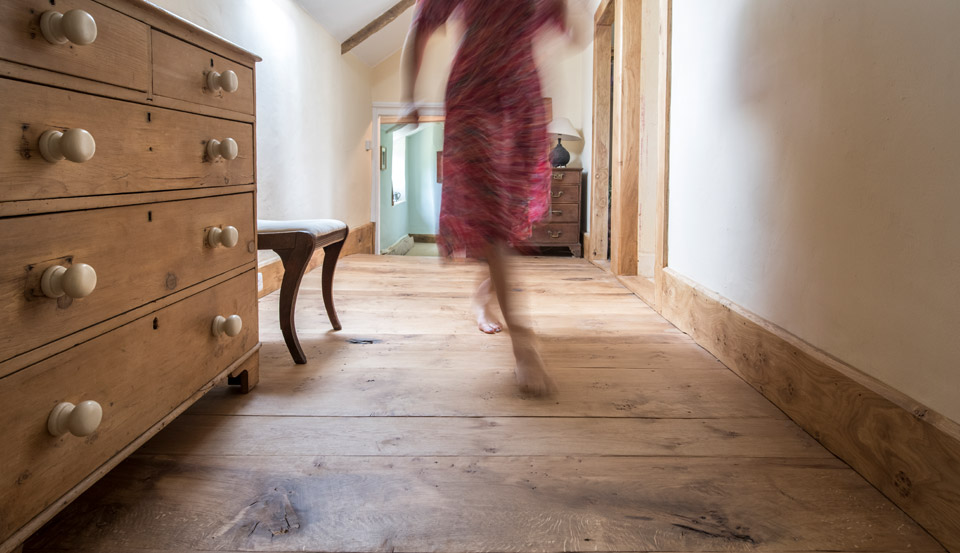
Preserving Heritage with Solid Wood Flooring.....
The timeless beauty of solid wood flooring has graced the interiors of buildings across the United Kingdom for centuries. From grand Georgian estates to charming Victorian terraces, the choice of wood has always played a crucial role in defining the character and history of these spaces.
At Coppice & Crown, we understand the importance of preserving a properties’ heritage while offering sustainable solutions for restoration and replacement.
A Brief History of Solid Wood Flooring in Listed Buildings.....
Wooden flooring became commonplace in homes during the Tudor period, when the introduction of first floors became more typical.
The first common home floorboards used, would have been very raw in their shape and appearance. Traditionally Elm or Oak would have been used as a flooring choice, giving strength and durability to a floor laid across wooden joists. Mixed width flooring would have been common place during this time too.
From the Baroque era, the elite of British society used their floors to demonstrate their wealth. They designed elaborate floor designs using narrow boards to show how much money they were able to spend employing craftsmen for lengthy periods.
Wide plank solid wood flooring was then prevalent again during the early Georgian period. These floors included hand-hewn boards which varied in width much like those of the early Tudor boards.
As the industrial revolution took hold, Baltic Pine presented itself as competition for our native woodlands. At first it was sold as a rare commodity for stately homes, but this soon changed. Easy shipping of pre-sawn planks made Pine a readily available flooring choice for many Victorian houses. The timber was strong and slowly grown offering a long-lasting flooring choice.
Most of the original Elm and Baltic Pine floors that remain today have been attacked by the common furniture beetle, leaving woodworm holes as evidence. The damage caused by this insect has rendered a lot of the traditional flooring unsafe. Read on to find out what we would recommend for a suggested replacement.
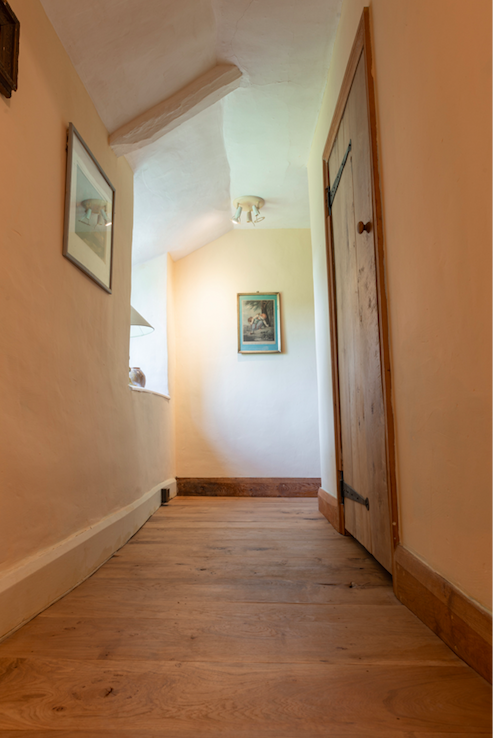
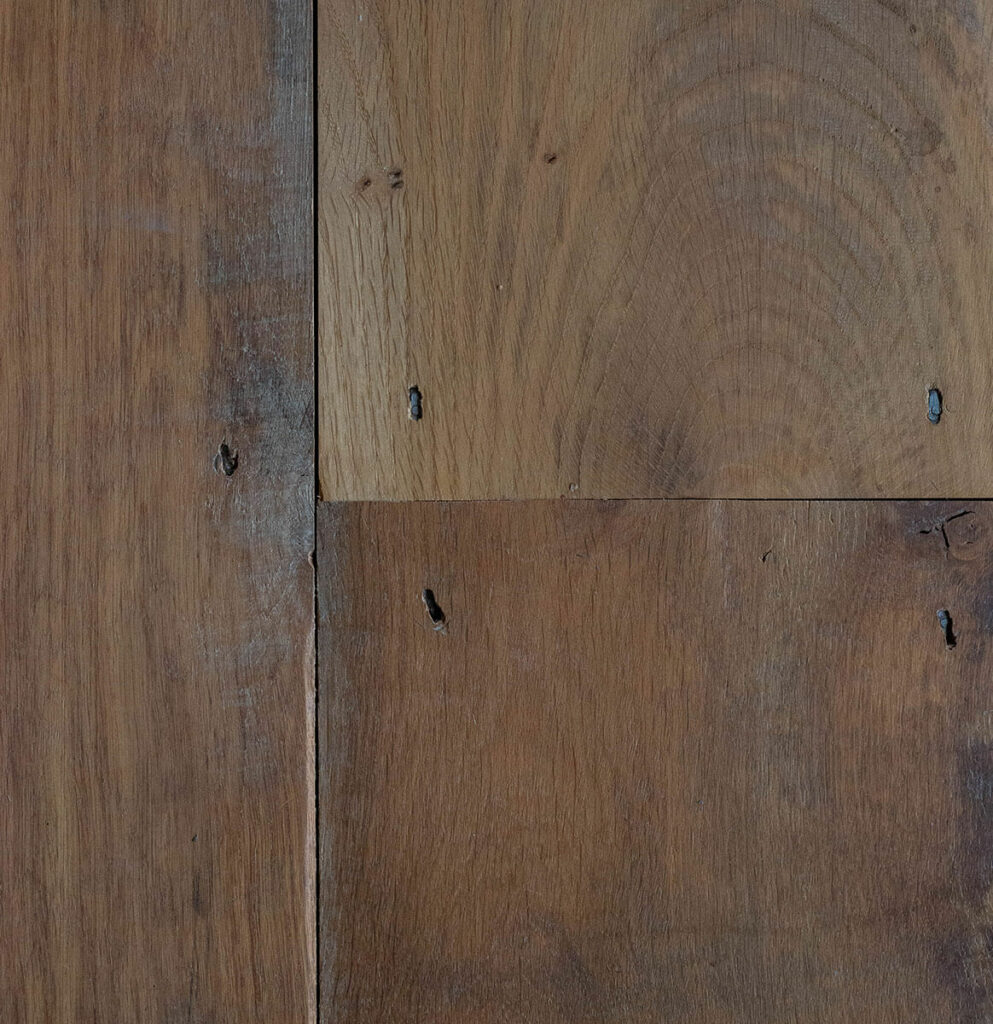
The Importance of Using the Same Type of Wood for Replacement.....
When replacing solid wood flooring in listed buildings, there is more to consider than just species. Growth rate, appearance, quality and sustainability, all come into account when choosing a suitable wood floor replacement.
Common Elm is commercially unavailable in any quantity given the Dutch Elm disease of the 1980’s. The commercial Pines that saturate the flooring market today are no sympathetic replacement for the high quality, slow grown Pines from virgin woodlands of the Victorian era.
British Oak is a suitable replacement or alternative to both Elm and Pine. We’re also noticing the use of British Ash flooring as an alternative to Pine. Slightly lighter in colour, it offers longevity over today’s Pine.
At Coppice & Crown, all of our floors are ‘Grown in Britain’ certified. Using British grown wood in renovations maintains architectural heritage in our country, whilst contributing to healthier woodlands and reduces the carbon footprint associated with transportation.
Matching the original size of boards .....
In addition to using the same type of wood, it’s crucial to match the original size of the boards as demonstrated here in this Somerset farmhouse.
The owners of this property were keen to preserve the historical character of the 15th century farmhouse house whilst matching the 320mm boards that they were able to salvage.
After careful discussions and the matching of samples against their existing floor, our Heritage Oak was chosen. With larger knots and undulations within the boards, this flooring looks 200 years old on the point of laying, giving a timeless base to any renovation.
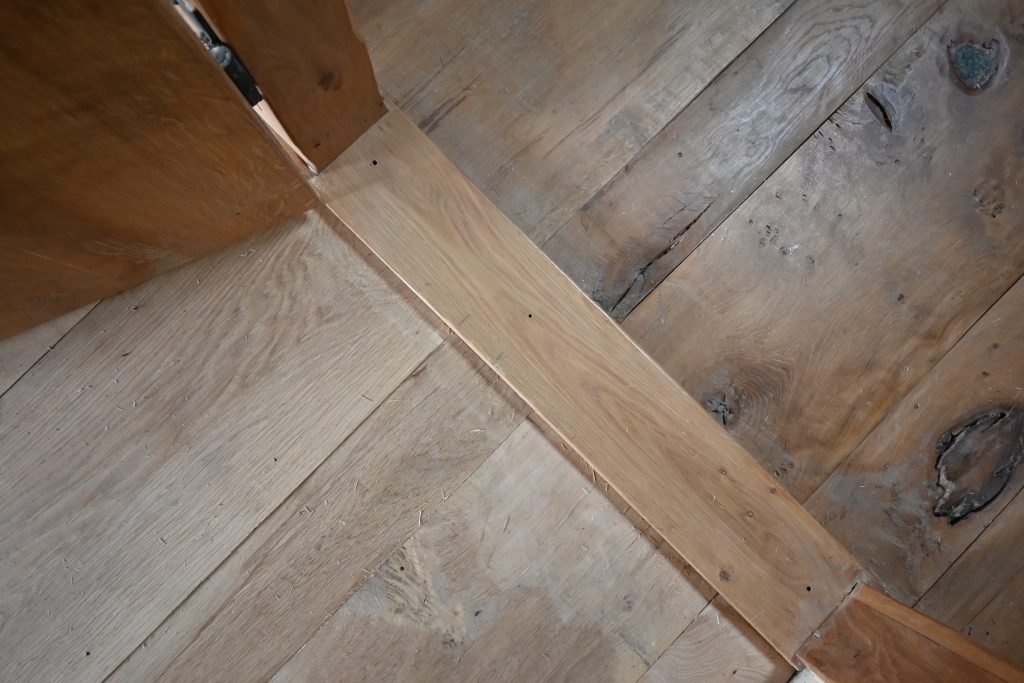
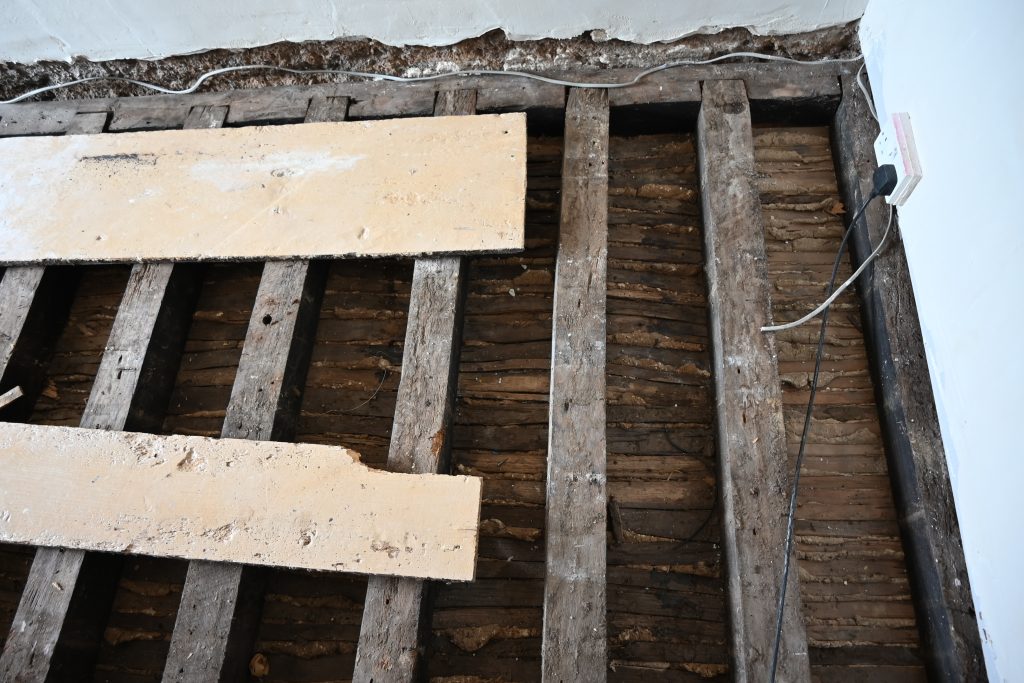
Installation and a Final Word on Sympathetic Restoration for Listed Properties.....
Preserving wooden flooring in listed buildings is a delicate process that requires careful consideration of materials and craftsmanship. We can also help with installation advice when considering old joists as well as traditional fixing methods and specific suggested nails.
At Coppice & Crown, we are dedicated to providing sustainable, UK-sourced timber that honours the history of these cherished spaces while offering the durability and beauty needed for the future. Whether you are restoring a grand estate or a quaint cottage, we are here to help you preserve the past while building for tomorrow.
